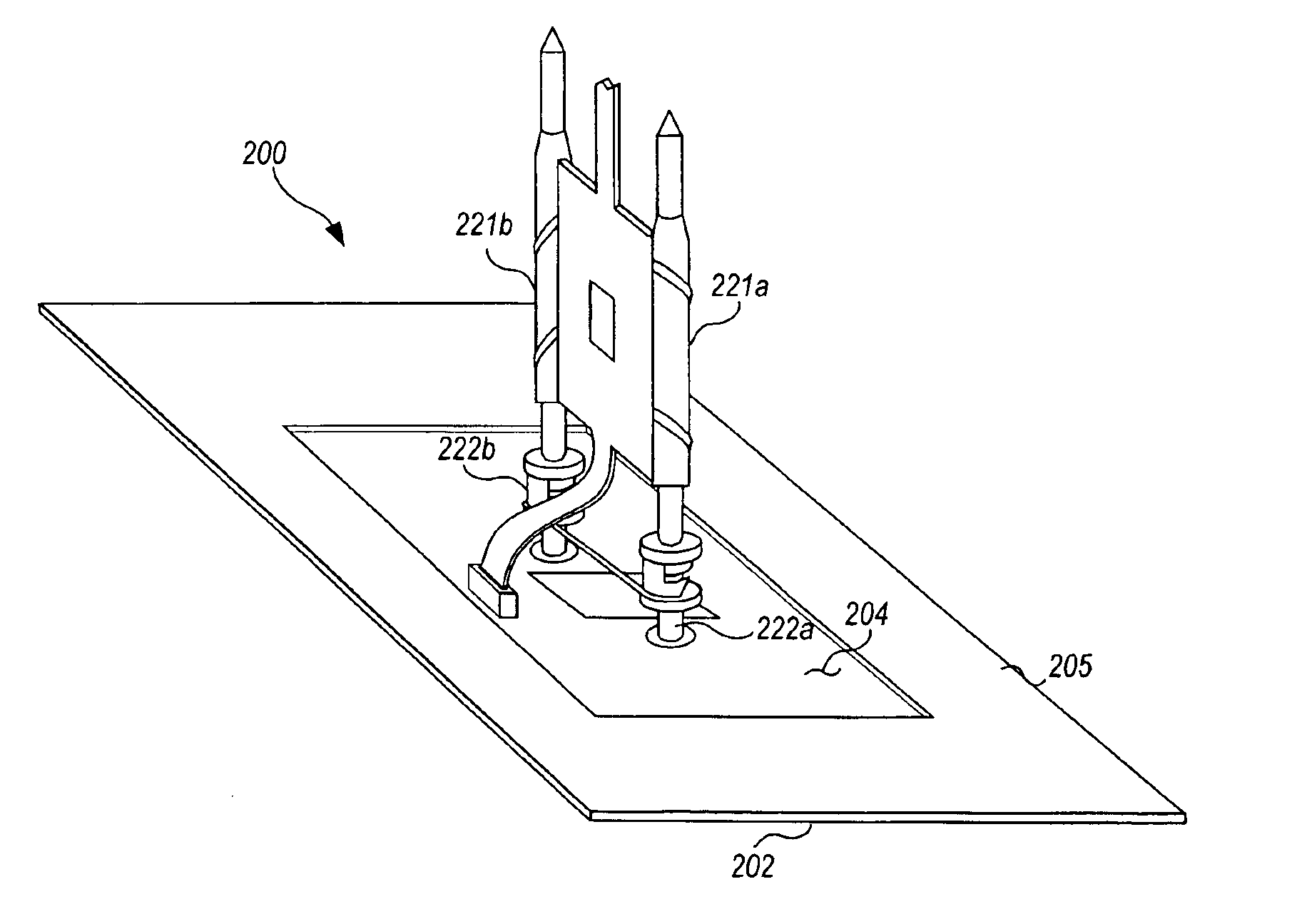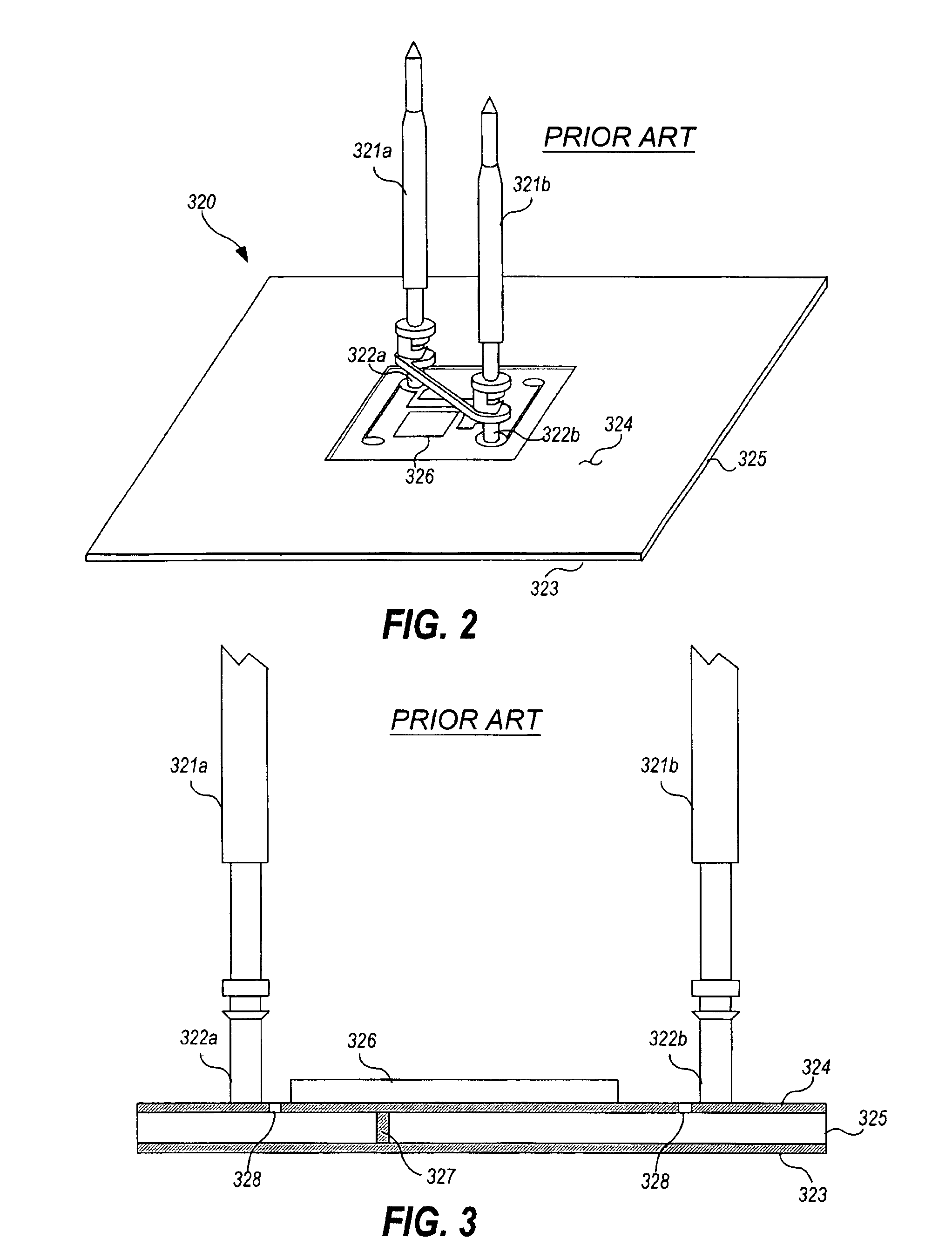Capacitive probe assembly with flex circuit
a probe assembly and flex circuit technology, applied in the direction of resistance/reactance/impedence, measurement devices, instruments, etc., can solve the problem of not being able to compete with the spacing of the integrated circuit package test, and achieve the effect of reducing the complexity of the tester control circuitry, reducing the number of probe assemblies, and reducing the in-circuit test tim
- Summary
- Abstract
- Description
- Claims
- Application Information
AI Technical Summary
Benefits of technology
Problems solved by technology
Method used
Image
Examples
first embodiment
[0036]Turning now to the invention, FIG. 5 illustrates an open-fault circuit test system 1 which utilizes a capacitive probe assembly 20 implemented in accordance with the invention. As shown, the open-fault circuit system 1 includes a signal source 30 with an output connected to a printed circuit board trace 32 that is designed to connect to integrated circuit lead 12 under test at 34.
[0037]A capacitive probe assembly 20 implemented in accordance with the invention is placed on top of the integrated circuit package 10. A thin dielectric (not shown) may be placed between the component package 10 and the test probe 20. The capacitive probe assembly 20 is connected to measurement circuitry 35 which may include an ammeter, a voltmeter or computing means to compute the effective capacitance. When a given measurement falls outside predetermined limits, the connection between the lead 12 under test and the trace 32 is diagnosed as being open.
[0038]When the test is performed, the signal so...
exemplary embodiment 200
[0052]FIG. 12 is a schematic of an exemplary embodiment 200 of the active buffer circuit 60a used in accordance with the present invention. Referring now to FIG. 12, the buffer circuit 200 is a standard amplifier circuit used to amplify the signal received from the capacitive plate 23, thus increasing the signal to noise ratio and decreasing the effects of stray capacitance. There can be many alternative circuits to accomplish this amplifying effect as would be readily apparent by an artisan in the field. The amplifier 200 includes a standard operational amplifier 204, standard silicon small signal diodes 205 and 206, and a standard 7.5 V zener diode 211. Resistors 207 and 208 are 100 K ohm resistors and resistors 209 and 210 are 1 M ohm and 464 ohm resistors, respectively. The circuit input 203 is electrically coupled to the trace connected to signal probe 29a to receive the capacitvely coupled signal from the capacitive plate 23. The circuit output 201 is electrically coupled to t...
PUM
 Login to View More
Login to View More Abstract
Description
Claims
Application Information
 Login to View More
Login to View More - R&D
- Intellectual Property
- Life Sciences
- Materials
- Tech Scout
- Unparalleled Data Quality
- Higher Quality Content
- 60% Fewer Hallucinations
Browse by: Latest US Patents, China's latest patents, Technical Efficacy Thesaurus, Application Domain, Technology Topic, Popular Technical Reports.
© 2025 PatSnap. All rights reserved.Legal|Privacy policy|Modern Slavery Act Transparency Statement|Sitemap|About US| Contact US: help@patsnap.com



